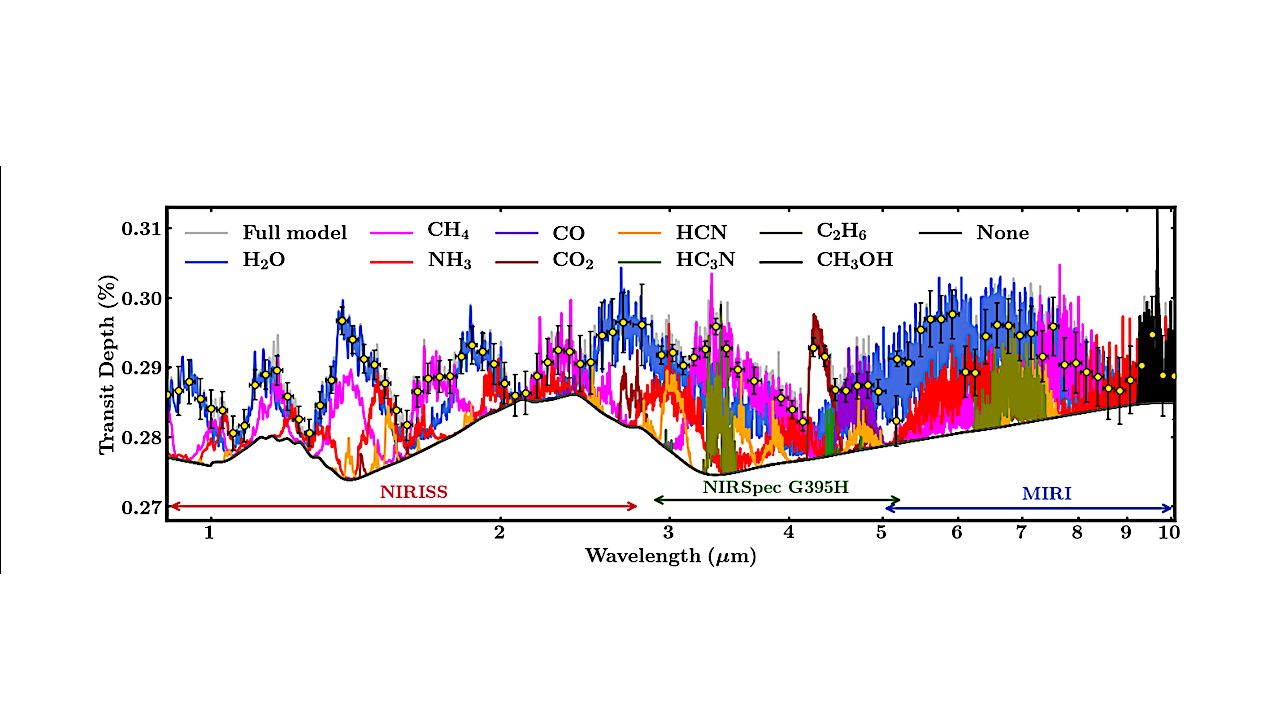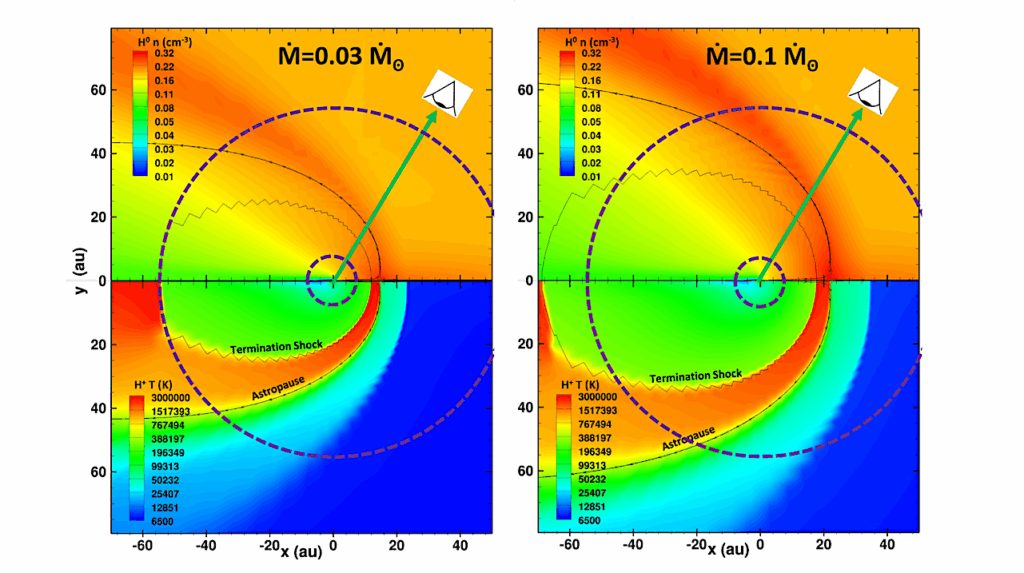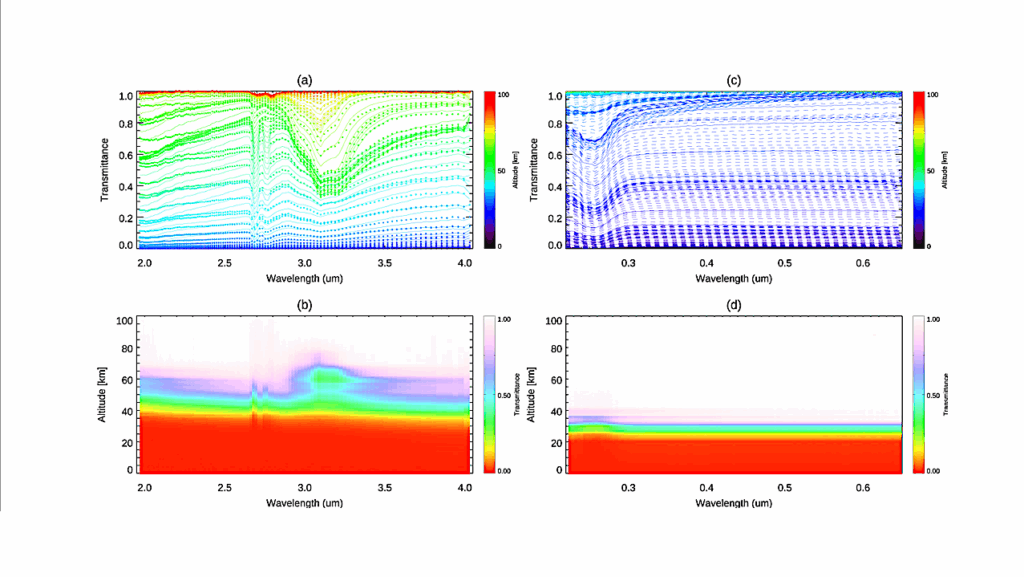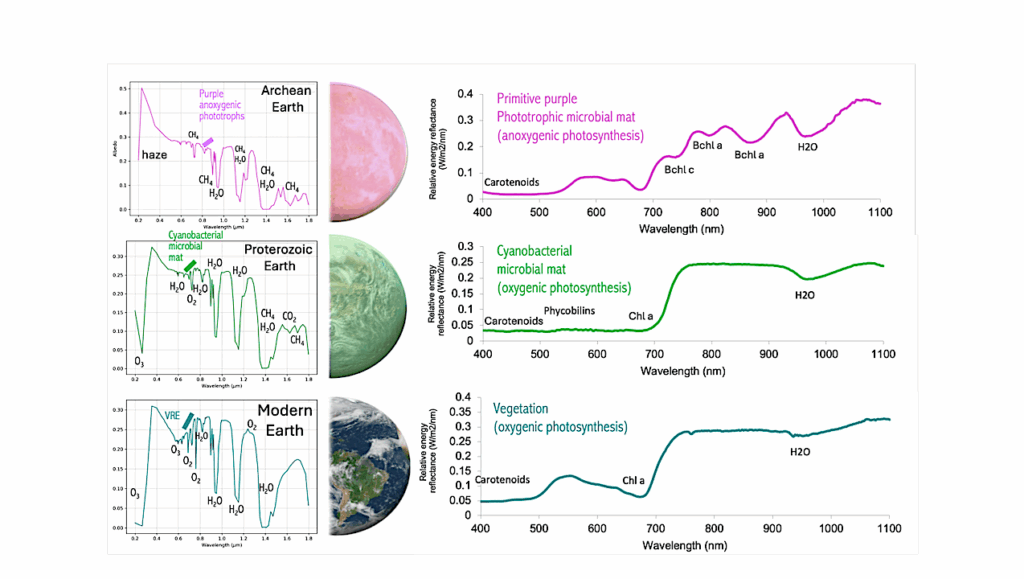Chemical Conditions On Hycean Worlds

Traditionally, the search for life on exoplanets has been predominantly focused on rocky exoplanets. Hycean worlds are a class of habitable sub-Neptunes with planet-wide oceans and H2-rich atmospheres. Their broad range of possible sizes and temperatures lead to a wide habitable zone and high potential for discovery and atmospheric characterization using transit spectroscopy.
Over a dozen candidate Hycean planets are already known to be transiting nearby M dwarfs, making them promising targets for atmospheric characterization with the James Webb Space Telescope (JWST). In this work, we investigate possible chemical conditions on a canonical Hycean world, focusing on (a) the present and primordial molecular composition of the atmosphere, and (b) the inventory of bioessential elements for the origin and sustenance of life in the ocean. Based on photochemical and kinetic modeling for a range of conditions, we discuss the possible chemical evolution and observable present-day composition of its atmosphere.
In particular, for reduced primordial conditions the early atmospheric evolution passes through a phase that is rich in organic molecules that could provide important feedstock for prebiotic chemistry. We investigate avenues for delivering bioessential metals to the ocean, considering the challenging lack of weathering from a rocky surface and the ocean separated from the rocky core by a thick icy mantle. Based on ocean depths from internal structure modelling and elemental estimates for the early Earth’s oceans, we estimate the requirements for bioessential metals in such a planet.
We find that the requirements can be met for plausible assumptions about impact history and atmospheric sedimentation, and supplemented by other steady state sources. We discuss the observational prospects for atmospheric characterisation of Hycean worlds.
Nikku Madhusudhan, Julianne I. Moses, Frances Rigby, Edouard Barrier
Comments: To be published in Faraday Discussions 2023, Astrochemistry at High Resolution
Subjects: Earth and Planetary Astrophysics (astro-ph.EP)
Cite as: arXiv:2306.13706 [astro-ph.EP] (or arXiv:2306.13706v1 [astro-ph.EP] for this version)
Submission history
From: Madhusudhan Nikku
[v1] Fri, 23 Jun 2023 18:00:00 UTC (1,762 KB)
https://arxiv.org/abs/2306.13706
Astrobiology








